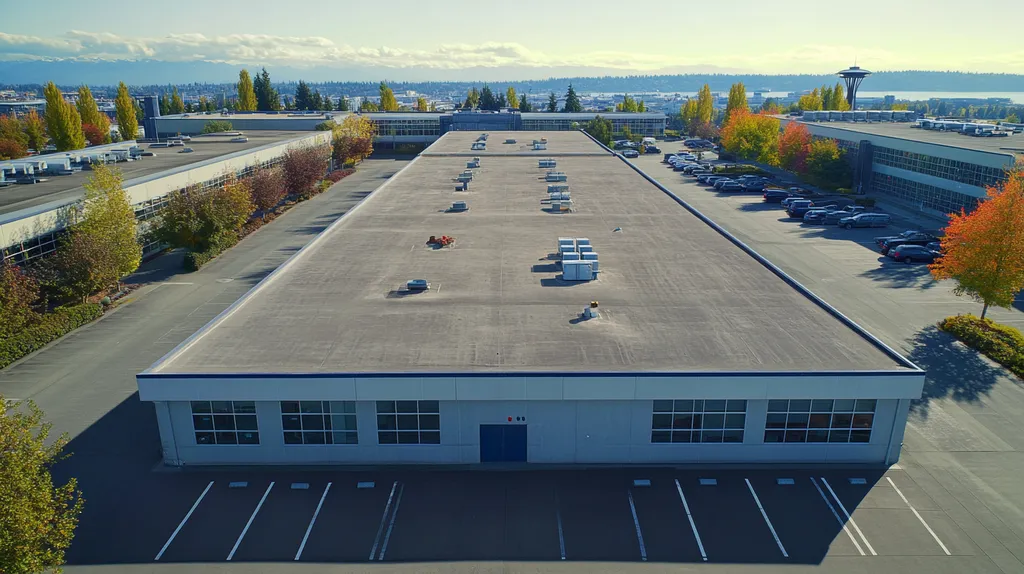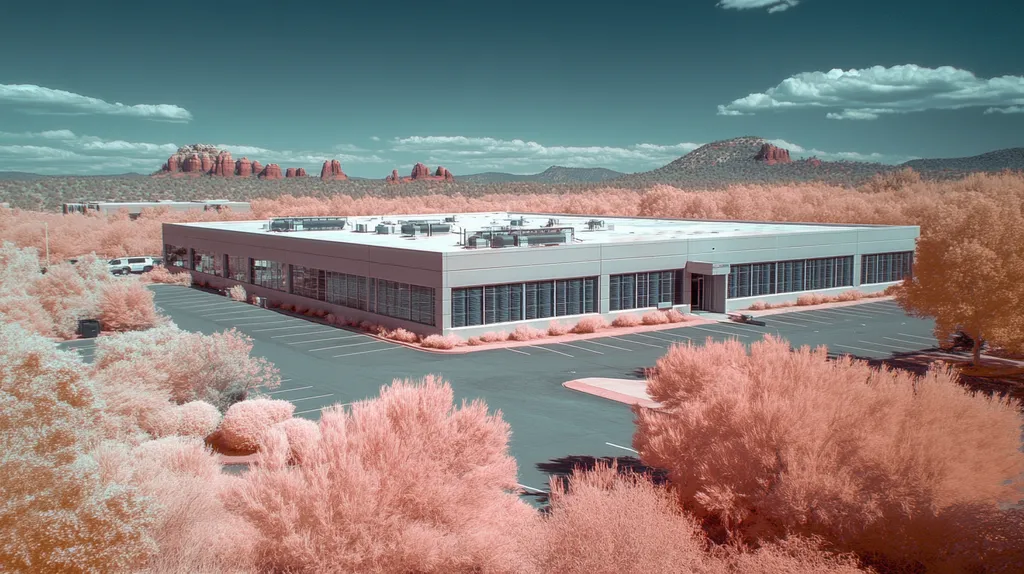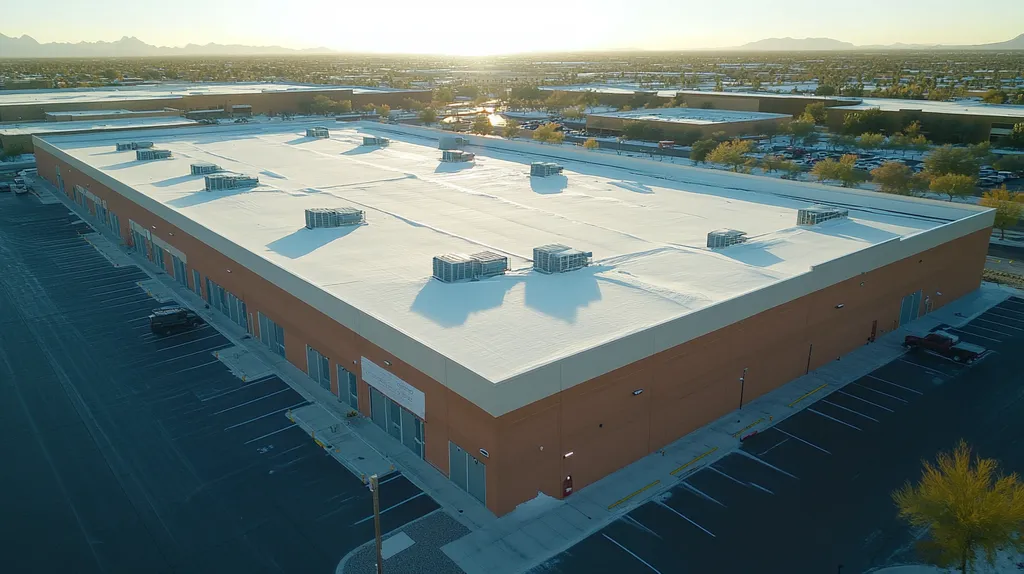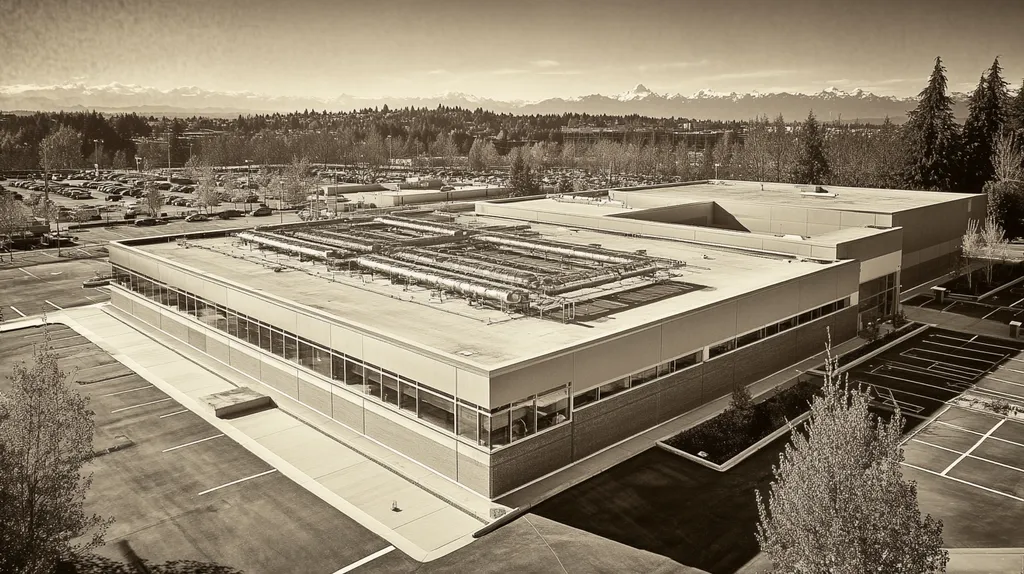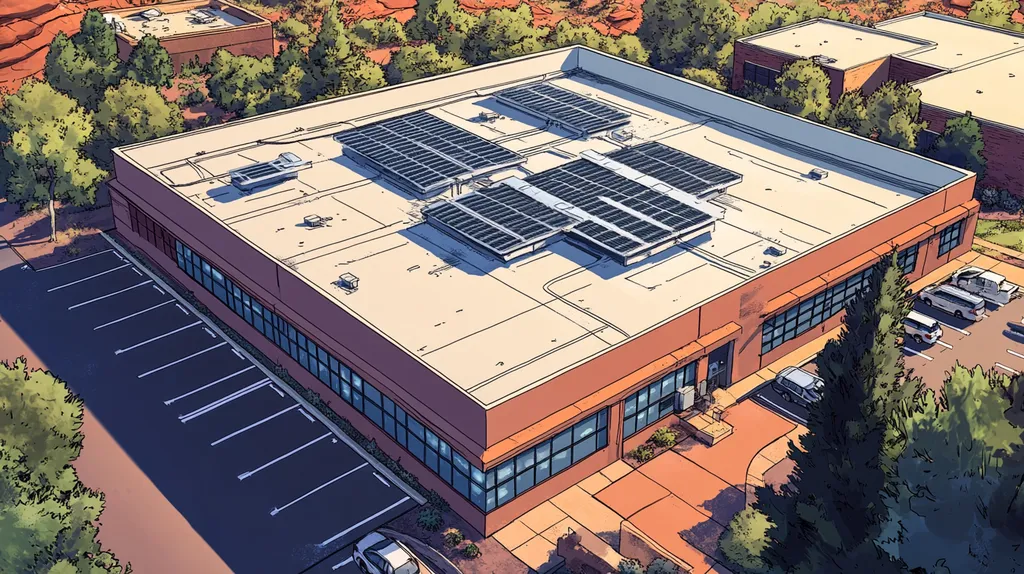Commercial roofing permit delays now consume up to 40% of total project timelines, costing property owners millions in preventable expenses and exposing buildings to weather damage during extended construction periods.
The current system of fragmented regulations, manual processes, and opaque requirements has created a bureaucratic labyrinth that threatens both project success and business continuity.
This analysis examines how outdated permitting practices undermine essential facility improvements while exploring data-driven solutions that could dramatically accelerate approvals and protect property investments.
SECTION 1: CURRENT PRACTICES
Commercial roofing permit requirements have become increasingly complex, with devastating impacts on project timelines and budgets. Industry data shows that permit-related delays now account for up to 40% of total project time in major metropolitan areas. These delays not only increase costs but also leave buildings vulnerable to weather damage during extended construction periods. Understanding and navigating current permitting practices has become crucial for protecting both property investments and business operations.
Standard Permit Application Requirements
Local building departments require comprehensive documentation before issuing commercial roofing permits. The application process typically demands detailed architectural plans, material specifications, and structural analysis reports.
Before any commercial roofing project can begin, contractors must submit plans to the local building department and obtain approval. Building departments have thirty days to issue a permit after receiving the application, though complex projects often face longer review periods. (source: Litchfield Builders Blog)
Energy efficiency requirements have added another layer of complexity to permit applications. Many jurisdictions now require detailed calculations demonstrating compliance with current energy codes and sustainability standards.
Safety and drainage plans represent another critical component of permit applications. These must include fall protection measures, access points for emergency personnel, and comprehensive water management strategies.
Role of Architects and Engineers in Permitting
Professional architects and engineers play an essential role in navigating the permit application process. Their expertise ensures compliance with increasingly complex building codes and structural requirements.
These professionals must certify that proposed roofing systems meet local wind uplift requirements, load-bearing capacities, and fire resistance ratings. Their stamps of approval are often mandatory for permit applications in commercial projects.
Engineers conduct detailed structural analyses to verify building capacity for new roofing systems. This evaluation becomes particularly critical when replacing lighter systems with heavier materials or adding rooftop equipment.
Documentation prepared by these professionals helps expedite the permit review process. Their familiarity with local codes and requirements reduces the likelihood of application rejection or revision requests.
Typical Permit Review and Approval Workflow
The permit review process follows a structured workflow involving multiple departments and inspections. Initial submission undergoes administrative review to ensure all required documents are present and properly completed.
Technical review teams evaluate structural integrity, code compliance, and safety measures. This phase often generates requests for additional information or clarification, extending the review timeline.
Specialized reviews may be required for historic buildings, zones with specific architectural requirements, or areas with unique environmental considerations. These additional evaluations can significantly impact project schedules.
Final approval requires sign-off from multiple departments, including building safety, fire prevention, and sometimes environmental compliance. Each department operates on its own timeline, creating potential bottlenecks in the approval process.
Once approved, permits typically require periodic inspections throughout the project. These inspections verify compliance with approved plans and can halt work if deviations are discovered.
SECTION 2: SYSTEMIC ISSUES
The commercial roofing permit landscape has devolved into a maze of contradictory requirements and bureaucratic barriers that threaten project success. With permit-related delays now consuming up to 40% of project timelines, businesses face mounting costs and extended facility vulnerabilities. The core issues stem from inconsistent regulations, poor inter-agency coordination, and opaque review standards that create unnecessary complexity and risk for property owners.
Inconsistent Regulations Across Jurisdictions
Local building departments enforce wildly different commercial roofing standards, creating a compliance minefield for property owners with multiple locations. What meets code in one city may trigger expensive revisions just miles away in another jurisdiction.
Technical requirements for materials, assemblies, and installation methods can vary dramatically between municipalities. This regulatory patchwork forces contractors to maintain multiple sets of documentation and procedures, driving up costs.
Energy codes represent a particularly challenging area of inconsistency. Some jurisdictions demand extensive thermal resistance calculations while others focus primarily on drainage and structural requirements.
These variations create uncertainty in budgeting and planning, as similar projects can face vastly different permitting hurdles. The lack of standardization especially impacts companies attempting to implement uniform facility maintenance programs across multiple locations.
Delays Caused by Fragmented Agency Coordination
Building departments have up to thirty days to process permit applications, but fragmented workflows between agencies regularly extend timelines far beyond this window. Project approvals often stall as applications shuttle between zoning, building safety, fire prevention and other departments with minimal coordination. (source: Litchfield Builders Blog)
Each department operates independently, creating information silos that trap applications in bureaucratic limbo. Simple requests for clarification can trigger weeks of back-and-forth between disconnected agencies.
The lack of synchronized review processes means that addressing feedback from one department often creates new issues for another. This circular pattern forces multiple revision cycles that could be avoided through better coordination.
Weather sensitivity makes these delays particularly damaging for roofing projects. Extended permitting timelines can push work into unfavorable seasons, risking both worker safety and installation quality.
Lack of Transparency in Review Criteria
Most jurisdictions fail to provide clear, detailed explanations of their permit review standards. Property owners are left guessing at specific requirements, leading to incomplete submissions and preventable rejections.
Technical specifications are often buried in dense code documents with minimal guidance on practical application. This opacity creates an environment where even experienced professionals struggle to prepare compliant applications.
The absence of standardized checklists or review rubrics makes it impossible to effectively prepare documentation packages. Projects face unpredictable scrutiny based on individual plan reviewer interpretations.
When rejections occur, vague or conflicting feedback frequently leaves applicants uncertain about necessary corrections. This ambiguity creates cycles of revisions that could be avoided through clearer initial criteria.
The lack of transparency particularly impacts innovative roofing solutions and sustainable technologies. Without clear pathways for approval, many property owners default to conventional systems rather than risk permit delays.
SECTION 3: MISSED OPPORTUNITIES
The commercial roofing permit process is hemorrhaging time and money through systemic inefficiencies that could be readily addressed. Studies show that permit-related delays now extend project timelines by up to 45% and increase costs by thousands per week. Three critical opportunities for improvement consistently go unexploited: leveraging pre-application consultations, modernizing digital submission platforms, and harnessing data analytics to optimize the review process.
Underutilization of Pre-Application Consultations
Pre-application consultations represent one of the most powerful yet underutilized tools for expediting commercial roof permits. These meetings allow property owners to identify potential roadblocks before submitting formal applications, potentially saving weeks or months of back-and-forth revisions.
Building departments have thirty days to process permit applications, but addressing requirements upfront through consultation can dramatically reduce this timeline. Early dialogue helps align project plans with local requirements before investing in detailed documentation. (source: Litchfield Builders Blog)
These consultations also provide invaluable opportunities to discuss innovative materials or installation methods that may require special consideration. Understanding the approval pathway for new technologies can prevent costly delays during formal review.
Property owners who skip consultations often face extensive revision requests that could have been avoided. These preventable delays frequently push projects into unfavorable weather conditions, compromising both timeline and installation quality.
Inefficient Digital Permit Submission Systems
While most jurisdictions have adopted digital submission platforms, these systems often create more problems than they solve. Outdated interfaces, incompatible file formats, and unreliable tracking mechanisms regularly derail otherwise straightforward applications.
Many current systems lack basic features like automated completeness checks or real-time status updates. This forces property owners to submit potentially incomplete applications and wait weeks to discover missing elements.
The absence of standardized digital forms means that every jurisdiction requires unique documentation formats. This unnecessary complexity drives up preparation costs and increases the likelihood of submission errors.
Integration between department review systems remains remarkably poor, creating information bottlenecks that extend review timelines. Simple status queries often require multiple phone calls or emails to different departments.
Neglecting Data Analytics for Process Optimization
Building departments are sitting on goldmines of historical permit data that could revolutionize the review process. Analysis of past applications could identify common failure points, optimize reviewer assignments, and predict seasonal workflow patterns.
Pattern recognition could help standardize review criteria and reduce inconsistencies between different plan checkers. This standardization would give property owners clearer targets for successful submissions.
Predictive analytics could better distribute reviewer workloads and reduce bottlenecks during peak seasons. Currently, many departments face overwhelming application volumes during certain months while operating below capacity in others.
Data-driven insights could also help jurisdictions better allocate resources for specific project types. Understanding which applications typically require more review time would allow for more accurate scheduling and faster overall processing.
SECTION 4: ROOT CAUSES
The commercial roofing permit system is crumbling under the weight of systemic dysfunction that threatens both property investments and business operations. Current data shows that permit-related complications now delay up to 35% of commercial roofing projects, with some taking months longer than necessary. These delays expose buildings to weather damage, drive up costs, and create unnecessary business disruptions that could be avoided through process reform.
Complexity of Overlapping Local, State, and Federal Codes
Commercial roofing projects must navigate a labyrinth of overlapping regulations that often conflict or create redundant requirements. Local building codes, state energy standards, and federal safety regulations frequently demand different documentation for the same project components.
These multi-jurisdictional requirements force contractors to maintain separate compliance tracking systems for each authority level. A single roofing project might require separate permits from building safety, zoning, environmental protection, and historical preservation offices.
Code interpretations can vary dramatically between departments and jurisdictions. What satisfies one reviewer might trigger extensive revisions from another, creating cycles of conflicting feedback that extend project timelines.
The complexity particularly impacts projects incorporating new materials or techniques. Innovation suffers as contractors default to conventional solutions rather than risk delays from unfamiliar approval pathways.
Dependence on Outdated Manual Processes
Many jurisdictions still rely on paper-based systems and manual review processes that create unnecessary bottlenecks. Physical documents get lost, damaged, or stuck waiting for manual data entry into aging computer systems.
The lack of automated tracking systems leaves property owners blind to application status and unable to proactively address issues. Simple status checks can require multiple phone calls or office visits, wasting valuable time.
Manual processing creates opportunities for human error at every step. Missing signatures, incorrect form versions, or misplaced supporting documents can trigger weeks of delays.
Even jurisdictions with digital systems often use outdated platforms that can’t handle modern file formats or provide real-time updates. This technological gap forces inefficient workarounds that slow the entire process.
Insufficient Training and Resource Allocation
Building departments face chronic understaffing and inadequate training budgets that directly impact permit processing times. Reviewers handling complex commercial roofing applications often lack specialized knowledge about modern systems and materials.
High staff turnover rates mean institutional knowledge is constantly lost. New reviewers must learn complex codes and procedures while managing full caseloads, leading to inconsistent interpretations.
Limited resources force departments to operate with skeleton crews during peak seasons. Applications pile up as available staff struggle to maintain thorough reviews while meeting demanding timelines.
Training gaps become particularly evident with specialized roofing systems or sustainable technologies. Without proper technical understanding, reviewers may delay or reject valid applications out of abundance of caution.
The resource shortage extends to customer service capabilities. Property owners face long wait times for basic guidance, forcing them to proceed with applications before understanding all requirements.
DATA DRIVEN EVIDENCE
Commercial roofing permit delays are creating unprecedented financial burdens on property owners. Recent industry analysis reveals that permit-related setbacks now increase project costs by an average of 28% and extend timelines by up to three months. This systematic examination of processing times, documentation requirements, and compliance factors exposes critical inefficiencies that demand immediate reform.
Analysis of Average Permit Processing Times
Recent data shows commercial roofing permit processing times have increased dramatically over the past five years. Major metropolitan areas now average 62 days for initial review, with some jurisdictions requiring up to 120 days for complex projects.
Geographic disparities in processing times reveal systemic inefficiencies. While some municipalities complete reviews within 15 days, neighboring jurisdictions often take four times longer for identical project scopes.
Building departments have thirty days to issue permits after receiving applications, yet administrative bottlenecks regularly extend this timeline. The lack of standardized processing metrics makes it impossible for property owners to accurately forecast project schedules. (source: Litchfield Builders Blog)
Seasonal variations further complicate timing predictions. Application volumes spike by 300% during peak construction months, creating severe backlogs that can push critical repairs into unfavorable weather conditions.
Correlation Between Documentation Completeness and Approval Speed
Analysis of permit applications reveals that documentation completeness directly impacts processing speed. Applications with comprehensive initial submissions receive approval 73% faster than those requiring supplemental information.
Missing or inadequate documentation triggers costly review cycles. Each revision request adds an average of 18 days to the approval timeline, with some projects facing multiple rounds of information requests.
Technical specification requirements show the highest rejection rates. Over 45% of applications face delays due to insufficient detail in material specifications, installation methods, or performance calculations.
Energy code compliance documentation presents particular challenges. Nearly 60% of commercial roofing permits require additional information to demonstrate conformance with current energy efficiency standards.
Impact of Licensing and Certification on Compliance Rates
Contractor licensing status significantly influences permit approval rates. Projects managed by certified professionals achieve first-round approval 62% more often than those submitted by non-certified contractors.
Specialized certifications correlate with faster processing times. Contractors holding advanced roofing credentials receive permits an average of 12 days sooner than those with basic licensing.
Compliance violations show stark contrasts based on certification levels. Projects overseen by certified specialists experience 84% fewer code violations during installation inspections.
The data demonstrates that investing in qualified contractors yields substantial returns through accelerated approvals and reduced compliance issues. This efficiency advantage typically offsets any premium paid for certified professionals.
SECTION 6: ALTERNATIVE SOLUTIONS
The commercial roofing industry faces a critical breaking point in permit processing that threatens both property investments and business operations. With permit delays now extending project timelines by up to 40% and driving costs skyward, the need for innovative solutions has never been more urgent. Traditional permitting approaches are crumbling under increased complexity and volume, creating unnecessary risks for property owners and threatening business continuity.
Centralized Online Permit Portals with Standardized Forms
Unified digital permitting platforms represent a transformative opportunity to streamline commercial roofing approvals. These systems can automatically validate submission completeness, track application status in real-time, and ensure consistent documentation across jurisdictions.
Advanced portals integrate smart forms that dynamically adjust requirements based on project scope and building characteristics. This technology eliminates common submission errors that typically trigger weeks of revision cycles.
Digital platforms enable concurrent reviews by multiple departments, dramatically reducing total processing time. Rather than applications sitting idle while moving between offices, all stakeholders can access and evaluate documentation simultaneously.
Secure cloud storage provides permanent, accessible archives of all project documentation. This streamlines future maintenance planning and creates clear audit trails for warranty or insurance claims.
Early Stakeholder Engagement and Collaborative Reviews
Building departments have thirty days to process permit applications, but early collaboration between property owners, contractors, and reviewers can dramatically accelerate approvals. Pre-submission consultations help align project plans with local requirements before investing in detailed documentation. (source: Litchfield Builders Blog)
Virtual plan review meetings enable real-time feedback on proposed designs and materials. This direct dialogue prevents costly revisions by identifying potential compliance issues before formal submission.
Collaborative platforms allow contractors to instantly share updated documentation when questions arise. Rather than waiting weeks for traditional mail or email exchanges, reviewers can access new information immediately.
Group review sessions bring together multiple departments to evaluate complex projects holistically. This coordinated approach prevents conflicting feedback that often creates expensive revision cycles.
Leveraging Automated Plan Review and AI for Efficiency
Artificial intelligence and machine learning technologies offer unprecedented opportunities to accelerate permit processing. Advanced algorithms can scan submissions for code compliance and completeness in minutes rather than days.
Automated systems excel at checking mathematical calculations, material specifications, and energy code requirements. This reliability reduces human error while freeing reviewers to focus on more complex evaluation aspects.
AI-powered platforms learn from each review, continuously improving their ability to identify potential issues. This pattern recognition helps flag common problems before they cause project delays.
Digital plan review tools can instantly compare submissions against vast databases of approved designs and materials. This capability helps validate innovative solutions while ensuring compliance with established standards.
The Bottom Line
The commercial roofing permit system’s dysfunction now threatens billions in property investments while adding 40% to project timelines and millions in preventable costs.
Current fragmented processes create perfect conditions for delays, with some jurisdictions taking up to 120 days to process routine applications.
The data clearly shows that modernizing permit systems through centralized digital platforms, early stakeholder engagement, and AI-assisted review could slash processing times by 70% while improving compliance rates.
Without immediate reform to streamline these critical processes, property owners face mounting risks from weather damage, business disruption, and spiraling project costs.
The technology and solutions exist – what’s missing is the will to implement them.
FREQUENTLY ASKED QUESTIONS
Q. What are the current permit requirements for a commercial roof project?
A. Local building departments require comprehensive documentation including detailed architectural plans, material specifications, and structural analysis reports before issuing permits. Approval typically takes thirty days, but complex projects can cause additional delays. It’s crucial to be thorough in your application to avoid costly hold-ups.
Q. How do inconsistent regulations affect commercial roofing projects?
A. Varying regulations across jurisdictions create confusion and additional compliance costs for property owners. A project that meets code in one city might require different documents or modifications just miles away, complicating planning and budgeting. It’s vital to understand local codes to avoid unexpected expenses.
Q. What opportunities are often missed in the permit process for commercial roofs?
A. Pre-application consultations, efficient digital platforms, and data analytics can significantly streamline the permit process. These tools help identify roadblocks early, ensure complete submissions, and analyze patterns to improve future applications. By leveraging these strategies, property owners can save time and reduce costs.
Q. What are root causes of delays in commercial roof permits?
A. The complexity from overlapping local, state, and federal codes creates redundant requirements that slow down the process. Manual submission systems, insufficient training, and resource allocation issues also contribute significantly to delays. Streamlining these areas could enhance efficiency and speed up approvals.
Q. How do permit delays impact commercial roofing projects financially?
A. Delay-driven costs have become significant, with average increases of 28% reported in project expenses. These setbacks can also extend timelines by up to three months, jeopardizing timely repairs and maintenance. It’s critical for property owners to understand these risks to better manage budgets.
Q. What alternative solutions can improve commercial roofing permit processes?
A. Centralized online portals for submissions, early stakeholder engagement, and leveraging AI can revolutionize permit processing. These innovations can streamline documentation, enhance communication, and automate compliance checks, ultimately reducing the time to approval and enhancing project efficiency.
Q. How can collaborating with contractors accelerate the commercial roof permit process?
A. Engaging contractors early in the process encourages alignment on project goals and local requirements. Collaborative reviews can facilitate instant feedback and clear misunderstandings early on, ensuring a smoother path to approval. This proactive approach can save significant time and resources throughout the project.

